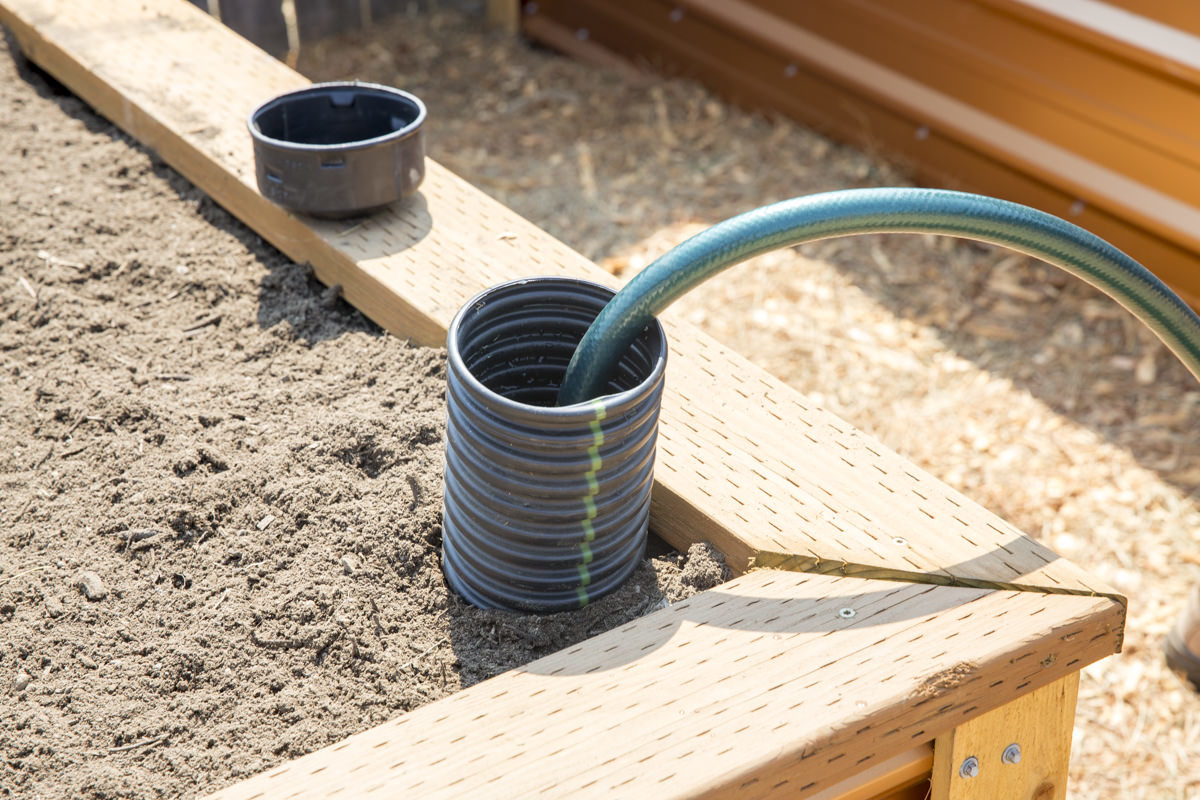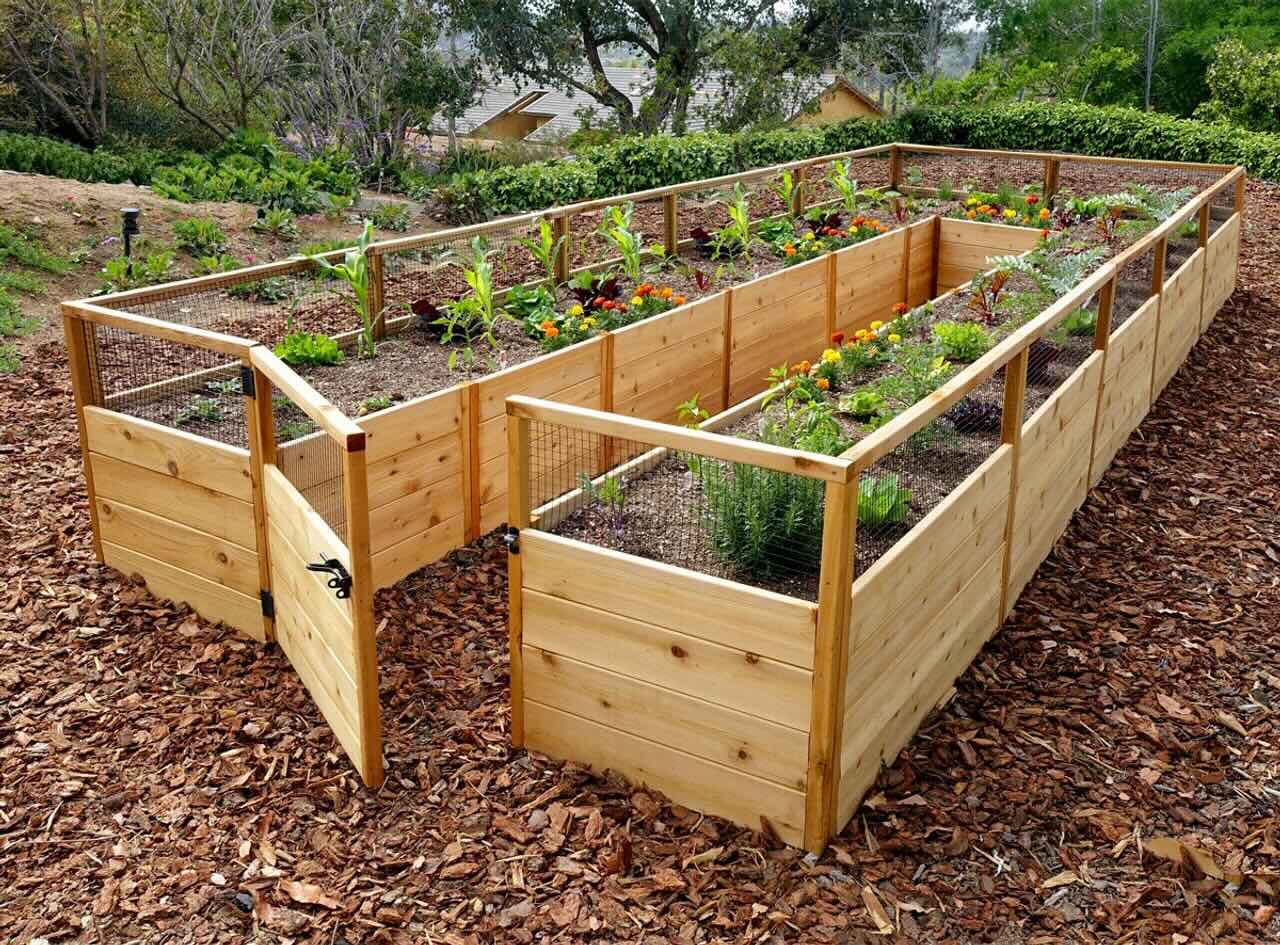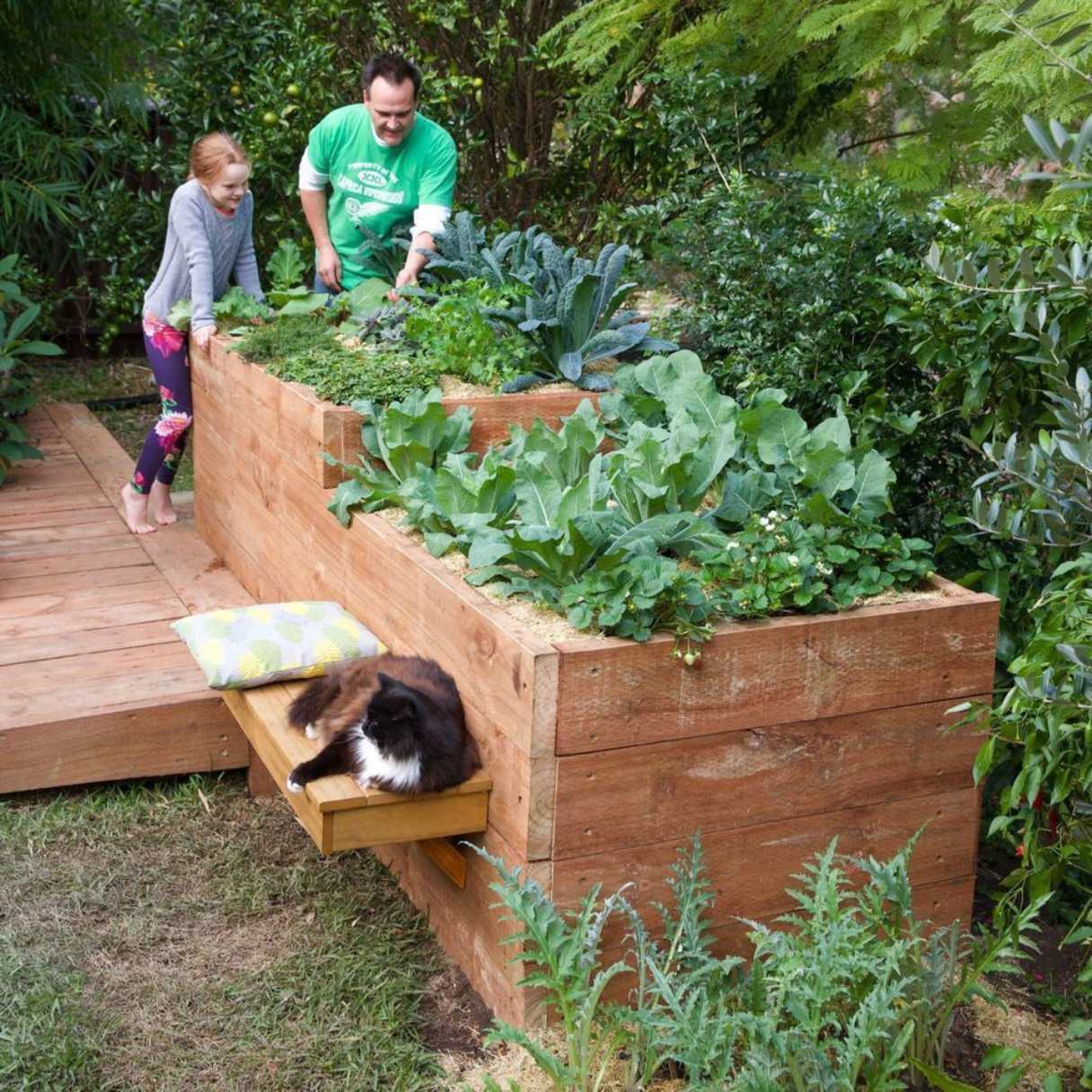

Articles
How To Make A Raised Garden
Modified: February 26, 2024
Learn how to make a raised garden with this comprehensive gardening guide. Discover tips and techniques for creating the perfect garden space.
(Many of the links in this article redirect to a specific reviewed product. Your purchase of these products through affiliate links helps to generate commission for Storables.com, at no extra cost. Learn more)
Introduction
Welcome to the wonderful world of gardening! If you’re looking to add a touch of nature to your outdoor space, growing a garden is the perfect way to do it. And what better way to get started than by learning how to make a raised garden?
Raised garden beds are a popular choice for both beginners and experienced gardeners alike. They offer numerous benefits, such as improved drainage, better soil quality, and the ability to control pests and weeds more effectively. Plus, they can be a visually appealing addition to your backyard.
In this article, we will guide you through the process of creating your own raised garden bed. We’ll cover everything from choosing the right location to harvesting your crops. So grab your gardening gloves and let’s get started!
Key Takeaways:
- Create a thriving raised garden bed by choosing the right location, building with quality materials, and filling it with nutrient-rich soil. Enjoy the process of planting, maintaining, and harvesting your homegrown produce for a rewarding gardening experience.
- Embrace the joy of gardening with a raised garden bed, providing a beautiful and tranquil oasis in your outdoor space. Experiment with plant varieties, care for your garden diligently, and savor the satisfaction of enjoying the bountiful fruits of your labor.
Read more: How To Make A Raised Garden Bed Cheap
Materials Needed
Before you begin building your raised garden bed, it’s important to gather all the necessary materials. Here’s a list of items you will need:
- Wood or alternative material for the bed frame: This is the main component of your raised garden bed. Opt for untreated wood such as cedar or redwood, as they are resistant to decay.
- Measuring tape and level: These tools will ensure that your garden bed is level and properly aligned.
- Screws or nails: You will need these to secure the bed frame together.
- Landscape fabric: This will prevent weeds from growing up through the soil.
- Soil: Choose a high-quality soil mix that is suitable for your region and the type of plants you wish to grow.
- Compost or organic matter: Adding compost or organic matter to the soil will enrich it with nutrients.
- Hand trowel or shovel: These tools will be essential for planting and maintaining your garden.
- Watering can or hose: To keep your plants hydrated.
- Seeds or seedlings: Depending on your preference, you can start your garden from seeds or purchase young plants from a nursery.
Make sure you have all these materials on hand before you begin building your raised garden bed. Having everything ready will save you time and allow you to enjoy the gardening process more smoothly.
Choosing the Right Location
When it comes to setting up your raised garden bed, choosing the right location is key. Here are some factors to consider:
- Sunlight: Most plants require at least 6-8 hours of direct sunlight daily. Look for an area in your yard that receives ample sunlight throughout the day.
- Accessibility: Pick a location that is easily accessible for watering, weeding, and harvesting. You’ll want to be able to tend to your garden without any obstacles in your way.
- Water Drainage: Ensure that the area you choose has good water drainage to prevent waterlogging. Avoid low-lying areas that tend to collect water, as excess moisture can lead to root rot and other plant diseases.
- Proximity to Water Source: Consider the distance to a water source like a hose or rain barrel. Having easy access to water will make it convenient for you to keep your plants hydrated.
- Wind Exposure: Take note of the prevailing wind direction in your yard. Strong winds can dry out the soil and damage delicate plants. Consider planting windbreaks, such as shrubs or a fence, to protect your garden.
- Safety: Keep in mind any potential hazards like overhanging branches or underground utility lines. Ensure there is enough space around your garden bed to avoid accidents.
By considering these factors, you’ll be able to choose the ideal location for your raised garden bed. Take some time to observe your yard and find the spot that meets the specific needs of your plants while providing convenience for you as the gardener.
Building the Raised Garden Bed
Now that you have chosen the perfect location, it’s time to start building your raised garden bed. Follow these steps:
- Measure and mark the desired dimensions: Determine the size and shape of your garden bed. Use a measuring tape to mark the dimensions on the ground.
- Prepare the wood or alternative material: Cut the wood or alternative material according to your measurements. If using wood, make sure to use untreated lumber to prevent chemicals from leaching into the soil.
- Assemble the bed frame: Attach the pieces of wood together using screws or nails. Use a level to ensure that the frame is straight and level.
- Place the landscape fabric: Lay down a layer of landscape fabric inside the bed frame. This will help prevent weeds from growing up through the soil.
- Position the bed frame in the chosen location: Move the assembled bed frame to the desired location in your yard. Make any necessary adjustments to ensure it is level.
- Fill the bed with soil: Begin filling the bed frame with a high-quality soil mix. If desired, you can mix in compost or organic matter to enrich the soil.
- Smooth and level the soil: Use a rake or hand trowel to smooth and level the soil surface. This will provide a good foundation for planting.
Once you have completed these steps, your raised garden bed will be ready for planting. Take a moment to admire your handiwork and envision the beautiful garden that will soon flourish within it.
Filling the Garden Bed with Soil
Filling your raised garden bed with the right soil is crucial for the health and success of your plants. Here’s how to do it:
- Calculate the soil volume needed: Measure the length, width, and depth of your garden bed. Multiply these measurements to determine the total soil volume required.
- Choose a high-quality soil mix: Select a soil mix that is specifically formulated for raised beds. Look for a blend that is well-draining and nutrient-rich.
- Amend the soil with compost or organic matter: To further enrich the soil and improve its fertility, incorporate compost or organic matter. This will provide essential nutrients for your plants.
- Fill the garden bed gradually: Begin by adding a few inches of soil mix to the bed. Use a rake or shovel to spread the soil evenly. Continue adding soil and leveling the surface until the bed is filled to the desired depth.
- Water the soil: Once the bed is filled, give the soil a good watering. This will help settle the soil and ensure proper moisture distribution.
It’s important to note that soil in raised garden beds tends to dry out faster than ground-level gardens. Therefore, it’s crucial to monitor the moisture levels and water accordingly. Regularly check the soil moisture by sticking your finger about an inch into the soil. If it feels dry, it’s time to water.
Remember, healthy soil is the foundation for healthy plants. By carefully selecting and preparing the soil for your raised garden bed, you are setting the stage for prosperous plants and a bountiful harvest.
When building a raised garden, make sure to use untreated wood or composite materials to avoid chemicals leaching into the soil. This will help keep your plants healthy and safe for consumption.
Read more: How To Make A Raised Garden Bed With Pallets
Selecting and Planting the Plants
Now comes the fun part – selecting and planting the plants in your raised garden bed. Here are some tips to help you make the right choices:
- Consider your garden bed’s sunlight exposure: Take note of the amount of sunlight your garden bed receives. Choose plants that thrive in the specific light conditions of your garden.
- Take into account the plant’s water and soil requirements: Different plants have varying water and soil preferences. Read the labels or do some research to ensure your chosen plants are compatible with your garden bed’s conditions.
- Plan for a variety of plants: Mix different types of plants to create a visually appealing and productive garden. Include a combination of vegetables, herbs, flowers, or even fruits, depending on the size and purpose of your garden.
- Consider companion planting: Certain plants benefit from being grown together due to natural pest control or nutrient complementarity. Research companion planting combinations to maximize the health and yield of your garden.
- Follow proper planting techniques: Dig holes in the soil that are deep and wide enough to accommodate the plant’s root ball. Gently remove the plant from its container, loosen the root ball, and place it in the hole. Backfill with soil and pat lightly around the base of the plant.
- Space your plants appropriately: Be mindful of the space requirements for each plant. Overcrowding can lead to competition for nutrients and increased susceptibility to diseases and pests. Allow enough room for each plant to grow and thrive.
- Water your plants: After planting, give your plants a good watering to help them settle into their new home. Ensure they receive adequate moisture throughout their growth to promote healthy development.
By carefully selecting and planting the right plants, you can create a vibrant and productive garden in your raised garden bed. Remember to regularly monitor your plants’ growth, provide them with proper care, and enjoy the process of watching them thrive.
Watering and Maintaining the Garden
Proper watering and maintenance are essential for the health and success of your raised garden bed. Follow these guidelines to ensure your garden thrives:
- Water wisely: Monitor the moisture levels in your garden bed and water accordingly. Aim to keep the soil consistently moist but not waterlogged. During hot and dry periods, you may need to water more frequently. Water at the base of the plants to avoid wetting the foliage, which can lead to fungal diseases.
- Mulch the soil: Apply a layer of organic mulch, such as straw or wood chips, around your plants. Mulch helps retain moisture, regulate soil temperature, and suppress weed growth. It also adds organic matter to the soil as it breaks down over time.
- Watch out for pests and diseases: Regularly inspect your plants for signs of pests or diseases. Remove any affected plants or portions of plants to prevent further spread. Consider using organic pest control methods or natural predators to manage pests.
- Weed regularly: Keep your garden bed free from weeds that compete with your plants for nutrients and water. Regularly remove weeds by hand or use organic weed control methods to maintain a healthy growing environment.
- Fertilize as needed: Depending on the nutrient requirements of your plants, fertilize them at appropriate intervals with organic fertilizers or compost. Follow the package instructions or consult a gardening expert for guidance.
- Prune and trim: Proper pruning and trimming promote healthy growth and shape your plants. Remove dead or damaged leaves, branches, or flowers to encourage new growth. Pruning also helps improve airflow and reduces the risk of disease.
- Monitor and support plant growth: Regularly check the progress of your plants and provide support as needed. Install stakes, trellises, or cages for plants that require extra support, such as tomatoes or climbing vines.
By following these maintenance tasks diligently, you will create an environment that supports healthy plant growth, minimizes disease and pest problems, and ensures a flourishing and beautiful garden in your raised garden bed.
Harvesting and Enjoying the Fruits of Your Labor
After all your hard work and dedication, the time has finally come to harvest the fruits of your labor. Here are some tips for harvesting and enjoying the bountiful yield from your raised garden bed:
- Observe the signs of readiness: Each plant has different indicators of when it’s ready to be harvested. Pay attention to factors such as color, size, and firmness to determine the optimal time for picking.
- Use proper harvesting techniques: Use pruning shears, scissors, or a sharp knife to carefully harvest your crops. Cut or gently twist the fruits or vegetables to avoid damaging the plant.
- Harvest regularly: Regularly harvest ripe produce to encourage continued plant growth and productivity. This also prevents overcrowding and allows space for other crops to thrive.
- Enjoy fresh or preserve: Once harvested, savor the flavors of your homegrown produce through fresh dishes, salads, or snacks. Consider preserving any excess harvest through methods such as freezing, canning, or drying.
- Share the abundance: If you end up with more than you can use, share the fruits of your labor with friends, family, or your local community. Freshly harvested, homegrown produce is always appreciated by others.
- Reflect and plan for the future: Take time to reflect on your gardening experience and make notes of what worked well and what you can improve upon. Use this knowledge to plan for future seasons and make adjustments for an even more successful garden next time.
Harvesting your own homegrown produce is incredibly rewarding. The flavors and nutritional value of freshly picked fruits and vegetables are unparalleled. Share your creations and the joy of gardening with others, and revel in the satisfaction of enjoying the fruits of your labor.
Conclusion
Congratulations on successfully creating your own raised garden bed! By following the steps outlined in this article, you have taken a significant step towards cultivating a thriving and productive garden. Maintaining a raised garden bed allows you to have greater control over the growing conditions, leading to healthier plants and an abundant harvest.
Remember, gardening is a continuous learning process. Don’t be afraid to experiment with different plant varieties, growing techniques, and garden layouts. Take note of what works well for your garden and make adjustments as needed. With time and experience, your raised garden bed will become a flourishing oasis that provides not only fresh produce but also beauty and tranquility to your outdoor space.
Whether you’re growing vegetables, herbs, flowers, or a combination of all, the satisfaction of tending to your garden and reaping the rewards is incomparable. Embrace the joy of the gardening journey as you witness the seeds you planted grow into vibrant plants and taste the delicious flavors of your homegrown harvest.
Remember to take care of your garden by providing adequate water, proper maintenance, and nurturing the soil. Regularly monitor for pests and diseases and address them promptly. Through attentive care and dedication, your raised garden bed will continue to thrive and bring you countless seasons of enjoyment.
So roll up your sleeves, put on your gardening gloves, and let your creativity and green thumbs flourish. Get ready to experience the joys of gardening in your own backyard with your beautiful raised garden bed. Happy gardening!
Frequently Asked Questions about How To Make A Raised Garden
Was this page helpful?
At Storables.com, we guarantee accurate and reliable information. Our content, validated by Expert Board Contributors, is crafted following stringent Editorial Policies. We're committed to providing you with well-researched, expert-backed insights for all your informational needs.















0 thoughts on “How To Make A Raised Garden”